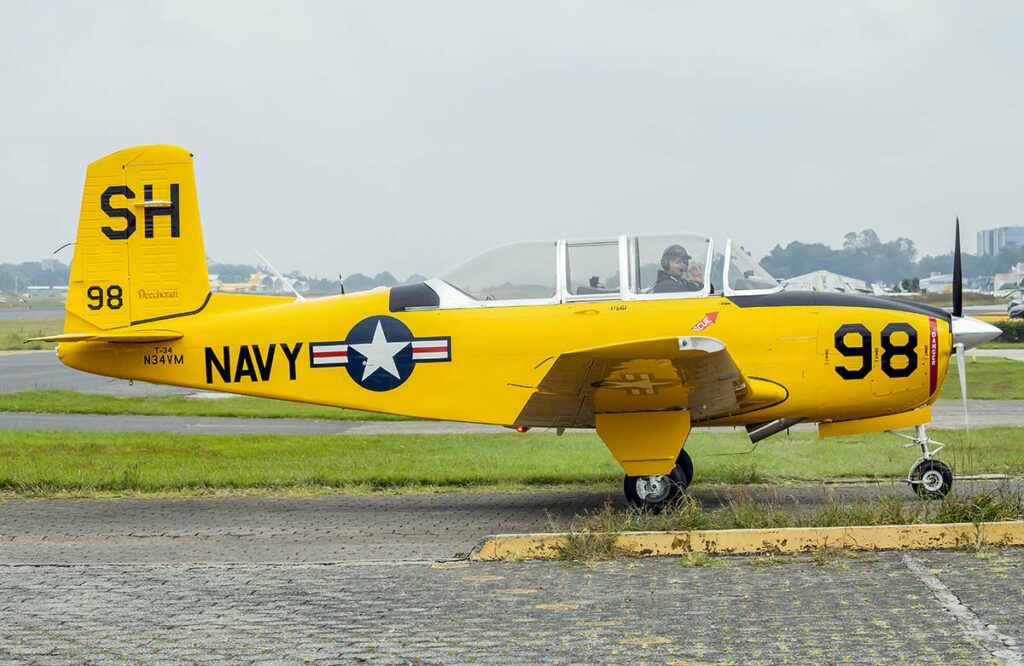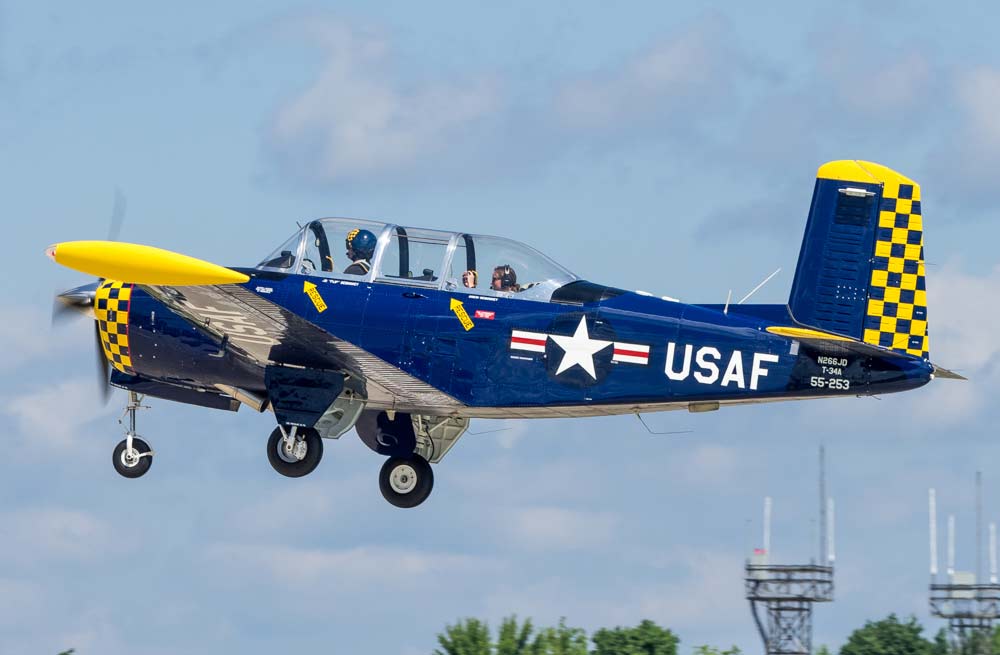A classic military trainer, the Beechcraft T-34 Mentor, is a single-engine, propeller-driven, two-seater aircraft renowned for its reliability and efficiency in pilot training.
In brief
The Beechcraft T-34 Mentor, a pivotal aircraft in the history of military aviation, has played a crucial role in training generations of pilots. Designed as a military trainer, it first flew in 1948, marking a significant advancement in training methodologies. With its single-engine, propeller-driven design, it offered a balance of simplicity and performance, making it ideal for instructional purposes. Its durable construction and cost-effective operation have ensured its widespread adoption and longevity in various air forces worldwide. The T-34 Mentor’s legacy lies not just in its technical specifications but also in its contribution to the development of skilled aviators.
The Beechcraft T-34 Mentor stands as a testament to the evolution of pilot training methodologies. This article delves into its history, design, performance, variants, and military use, offering an in-depth understanding of this iconic aircraft.

History of the Development of the Beechcraft T-34 Mentor
In the post-World War II era, there was a growing need for an advanced, reliable, and cost-effective military trainer aircraft. This need was driven by the evolving landscape of military aviation, which demanded more skilled pilots capable of handling increasingly sophisticated aircraft.
The T-34 Mentor program was launched by Beechcraft in response to this need. The primary objective was to create an aircraft that could efficiently bridge the gap between basic training and advanced combat-ready skills.
The T-34 took its first flight on December 2, 1948. Its design and development were influenced by the successful Beechcraft Bonanza, a light, single-engine civilian aircraft known for its innovative design and performance.
The T-34 Mentor not only marked a significant advancement in training methodologies but also reflected the technological and strategic shifts in post-war aviation. Its introduction played a key role in shaping the future of military pilot training programs.
Design of the Beechcraft T-34 Mentor
The T-34 Mentor was designed with simplicity and functionality in mind. Its airframe was predominantly constructed from aluminum alloy, providing a lightweight yet robust structure. The aircraft measures 25 feet 11 inches (7.9 meters) in length, with a wingspan of 32 feet 10 inches (10 meters).
One of the primary advantages of the T-34 was its ease of maintenance, a critical factor for military training aircraft. However, its simplicity also meant that it lacked some of the advanced features found in more sophisticated trainers.
The Mentor’s design facilitated a smooth transition for trainees from basic trainers to more advanced aircraft, making it a valuable asset in pilot training programs.
Performance of the Beechcraft T-34 Mentor
The T-34 Mentor’s performance is characterized by its reliability and efficiency. It is powered by a Continental O-470-13 engine, capable of producing 225 horsepower. The aircraft has a maximum speed of 188 miles per hour (303 km/h) and a range of 750 miles (1,207 kilometers).
When compared to contemporaries like the Cessna T-37 Tweet and the Soviet Yak-18, the T-34 stands out for its lower operational costs and ease of maintenance. Its performance, while not groundbreaking, provided a balanced platform for training purposes.
Several variants of the T-34 were developed, each with specific modifications to meet different requirements. The T-34A was the initial Air Force version, while the T-34B was tailored for the Navy. The T-34C Turbo-Mentor, introduced in the 1970s, featured a turboprop engine for enhanced performance.
The T-34 Mentor has been used extensively in various military training and combat roles. It was equipped with basic armaments, making it suitable for light combat and weapons training. The aircraft saw service in numerous conflicts, providing valuable support in pilot training and light attack missions.
The T-34 was sold to various countries, underlining its international appeal. Some air forces continue to use the T-34, although it has been replaced in many cases by more modern trainers.

The Beechcraft T-34 Mentor’s legacy is rooted in its effectiveness as a training aircraft. Its balance of simplicity, performance, and reliability has made it a cornerstone in the development of skilled military aviators for over half a century.
Back to the Trainers section.